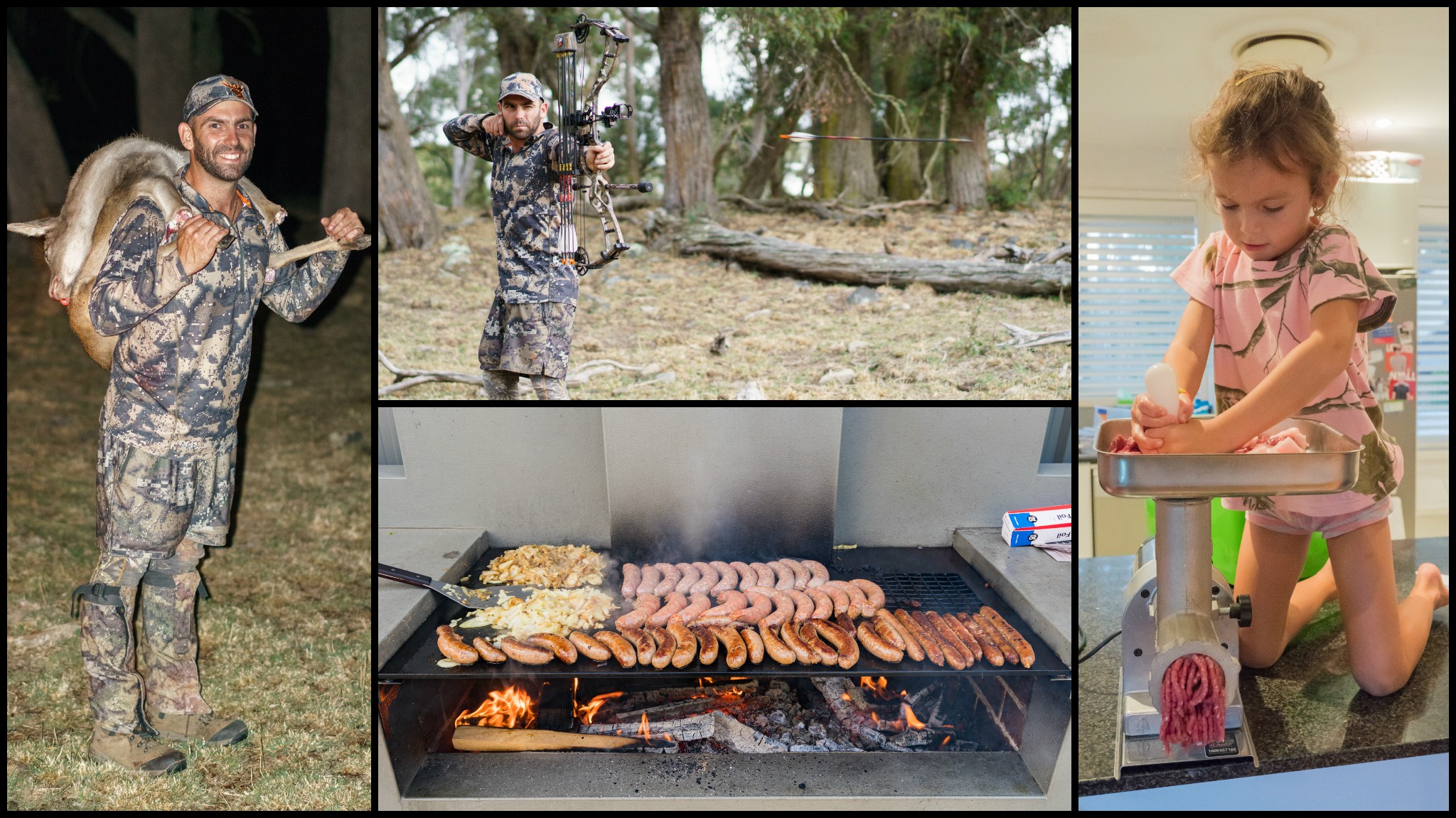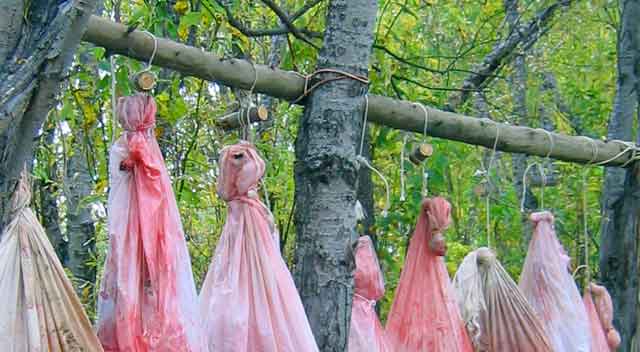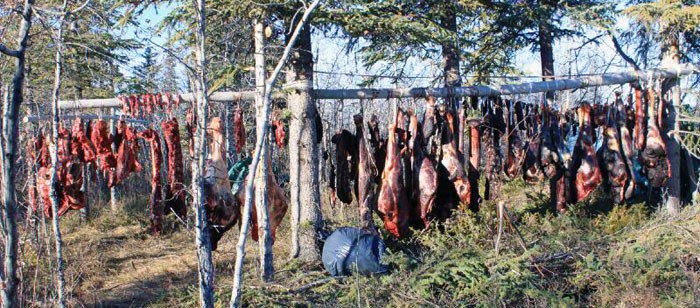
Looking after game meat is done easily if a few principles are followed. If you have vehicle access to the animal field care can be relatively easy. If you are in the backcountry or want to continue your hunt before reaching the cool room or refrigeration some basic principles should be followed.
Over the years, I have butchered many game animals and to this date have never been sick from the way that I have handled meat.
There are many opinions and methods to meat handling. These are basic principles and if followed should keep your prized game meat in good shape.
The Animals Body Heat
The animals own body heat would have to be the number one reason hunters would experience meat spoilage. Most game animals will run at about 37 degrees Celsius. When an animal dies, its temperature can actually rise because the muscles keep generating heat, while the cooling mechanism the circulatory system has been shut down. To prevent bone meat spoiling, you must reverse that process. If you can lower meat temperature to air temperature, you’re 90 percent home free. Here’s how:
- To skin or not.If you shoot a deer in weather 5 degrees or colder, gut the deer and leave the hide on. Deer are small enough to cool quickly, and the hide acts as a sterile game bag during transport. In warmer weather, you should consider skinning animals — especially big ones like reds and sambar — quickly. Removing the heavy hide is the first step in rapid cooling.
- To hang or not.Yes, good air circulation promotes quick cooling, and hanging promotes good circulation. Areas that will remain in the shade all day will remain the coolest. Cool air sinks and warm air rises, so it makes sense to place meat as low as possible.
- To gut or not.I always gut the animals that I harvest that I can get a vehicle too. Most of the time this is not the case and to avoid wallowing in guts and blood and to ensure rapid cooling, I slit the hide up the back from the tail to the head, skin the upper side, remove the front and back legs, and back straps. Breaking the animal down into four even quarters for packing out.
- To bone or not.Boning reduces weight. Big deer can weigh you down. Taking the bones out is a welcomed

reduction if you have to pack the meat on your back. The only problem with this is I find that the meat get far dirtier which equals potential contamination. The boning does ensure rapid cooling on hot Australian summer days. Even on mild days the thick portions — hips, shoulders — of big animals can retain heat for hours, and the fastest way to cool them is to remove the bone and expose the meat to the air. If in doubt bone it out. Remembering too bag the meat to keep it clean.
Moisture
Meat-spoiling bacteria thrive in a moist environment, but water isn’t all bad. After all, when a butcher kills a beef cow, he hangs the carcass and washes it top to bottom. In the field, if you kill a deer on 20-degree day near a cold creek or river, I suggest you skin and bone the elk, and then wash the meat in the creek to cool it quickly and eliminate contamination. Then wipe the meat dry, bag it, and lay it out to air dry. From then on, keep it dry. In rain or snow, make a tarp canopy that keeps the meat dry but allows good air circulation.
Flies and Dirt
In temperatures below 10 degrees, flies are rarely a problem, but in higher temperatures, blowflies are your nemesis. In warm weather, always bag skinned meat immediately. To be of value, bags must be light and compact (so you’ll carry them), and guaranteed fly and dirt proof (no holes). Some manufacturers say flies cannot blow eggs through cheesecloth bags but I have found that they can slip through.
Air Temperature
Once you get all body heat out of a carcass, air temperature is almost irrelevant. Commercial butchers age beef for up to two weeks at 5 degrees, and they quick-age beef for three days at 18 degrees. Guided by that continuum, I believe if you can cool meat to 18 degrees, you have roughly three days to get it into a cooler. If you can cool the meat to 5 degrees, you have up to two weeks. (These are my numbers that I have become confident with over time).
depression there — where cold air would pool and meat scent would disperse very little — I laid the meat on a rack I’d made with rocks and limbs to ensure good air circulation. I’ve kept many animals in the field for several days this way with no problems.
When In Doubt Throw it Out
When in doubt throw it out. Ensuring that your meat is as cold as possible as quick as possible will give you piece of mind. I have seen big cuts of meat spoil in an esky when the whole animal was taken. An Ice bag in the gut cavity will help with cooling even when the outside is cool, the big muscle areas can hold heat and spoil it.

0 Comments